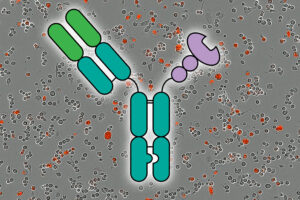
International researchers have conducted an extensive study on the population genetics of three crested penguin species native to Aotearoa New Zealand, revealing a stark contrast in their conservation outlooks. While tawaki, or Fiordland penguins, are thriving, their subantarctic relatives face uncertain futures.
The research, spearheaded by the Tawaki Project at the University of Otago – Ōtākou Whakaihu Waka, offers what is believed to be the most comprehensive analysis of these species to date. The study, published in this week’s edition of PLOS One, highlights the flourishing condition of tawaki as a single, healthy population. In contrast, erect-crested and Eastern rockhopper penguins are experiencing worrying declines and fragmented population structures.
Understanding the Genetic Landscape
Lead author Dr. Jeff White of Cornell University, who has collaborated extensively with the University of Otago, emphasized the dual nature of the findings. “It’s encouraging to see tawaki maintaining strong genetic health, which bodes well for their future if we continue to safeguard their marine habitats,” he stated.
However, the situation for the other two species is less optimistic. “The genetic isolation and loss of diversity in erect-crested and Eastern rockhopper penguins highlight just how urgent it is to understand and address the causes of their ongoing decline,” Dr. White added.
“The genetic isolation and loss of diversity highlight just how urgent it is to understand and address their causes of their ongoing decline.” — Dr. Jeff White
Historical Context and Conservation Efforts
The plight of these penguins is not a new concern. Historically, New Zealand’s unique wildlife has faced numerous challenges, from habitat destruction to climate change. The crested penguins are no exception, with their survival intricately linked to the health of their marine environments.
Efforts to conserve these species have been ongoing, yet the new genetic data underscores the need for targeted conservation strategies. The Tawaki Project has been instrumental in these efforts, focusing on habitat protection and understanding the ecological needs of these penguins.
Expert Opinions and Future Directions
Experts in the field suggest that immediate action is necessary to prevent further declines. Dr. Sarah Thompson, a marine biologist not involved in the study, noted, “The genetic data provides a roadmap for conservationists. It’s crucial to address both the environmental and genetic factors contributing to these species’ decline.”
Conservationists are calling for increased monitoring and protection of breeding sites, as well as international cooperation to mitigate the impacts of climate change and overfishing, which threaten the penguins’ food sources.
By the Numbers:
- Tawaki population: Thriving with strong genetic health
- Erect-crested penguins: Declining with fragmented populations
- Eastern rockhopper penguins: Facing genetic isolation
Implications and Next Steps
The findings of this study have significant implications for conservation policies. The success of tawaki suggests that with adequate protection, penguin populations can thrive. However, the challenges faced by erect-crested and Eastern rockhopper penguins require urgent attention.
Moving forward, researchers and conservationists are advocating for a comprehensive approach that includes habitat preservation, genetic studies, and public awareness campaigns. The goal is to ensure that all of New Zealand’s crested penguins can thrive in their natural habitats.
As the global community becomes increasingly aware of the importance of biodiversity, the story of New Zealand’s crested penguins serves as a poignant reminder of the delicate balance between species survival and environmental stewardship.





